Pricing Change
New pricing for orders of material from this site will come into place shortly. Charges for supply of digital images, digitisation on demand, prints and licensing will be altered.
Clydebank, John Brown's Shipyard, Giant Cantilever Crane
Crane (20th Century)
Site Name Clydebank, John Brown's Shipyard, Giant Cantilever Crane
Classification Crane (20th Century)
Canmore ID 238492
Site Number NS46NE 29.01
NGR NS 49485 69758
Datum OSGB36 - NGR
Permalink http://canmore.org.uk/site/238492
- Council West Dunbartonshire
- Parish Old Kilpatrick (Clydebank)
- Former Region Strathclyde
- Former District Clydebank
- Former County Dunbartonshire
The John Brown cantilever crane was completed in 1907 by Sir William Arrol and Co. in collaboration with Stothert and Pitt. The crane cost £24,600 to build and is approximately 150ft high, with a capacity of 150 tonnes (upgraded to 200 tonnes in 1938). It was the first electrically powered crane of its kind. It was erected on the fitting out dock to lift heavy items, such as boilers and armaments, onto ships being fitted out by the yard. The crane ceased operating c.1971, after shipbuilding at the site came to an end. It was given A-listed status in April 1989.
In 2004, the crane was acquired by urban regeneration company Clydebank Rebuilt. Restoration work was completed in 2007, at a cost of approximately £3.75 million. The crane was adapted for use as a visitor attraction and museum, serviced by a newly incorporated lift, with illuminations at night. In July 2013, the structure was presented with the Engineering Heritage Award from the Institute of Mechanical Engineers.
It is one of four cranes of this kind surviving on the River Clyde. The others are; the Finnieston/Stobcross crane, Glasgow (Cowans Sheldon and Co. of Carlisle, Cleveland Bridge and Engineering Co., 1931, 175 tonnes); the James Watt Dock crane, Greenock, Inverclyde (Sir William Arrol and Co., 1917, 150 tonnes); the former Barclay Curle/North British Diesel Engine Works crane, Glasgow (Sir William Arrol and Co., 1920, 150 tonnes).
Information from Martin Conlon, 1 July 2016
NS46NE 29.01 49485 69758
This overhead rotating cantilever crane was designed by Sir William Arrol and Co and erected by the company at John Brown's shipyard in 1907. The capacity load is 150 tons.
Information from RCAHMS (MMD) 9 September 2008.
Project (2007)
This project was undertaken to input site information listed in 'Civil engineering heritage: Scotland - Lowlands and Borders' by R Paxton and J Shipway, 2007.
Publication Account (2007)
Titan Crane, Clydebank A giant overhead rotating cantilever steel crane designed by Sir William Arrol and Company and erected by the firm in 1907 at John Brown’s shipyard. It is about 160 ft high, has cantilever frames 150 ft and 90 ft long and a capacity of 150 tons. This type of crane was much used in ship construction and for loading heavy items such as locomotives into ships.
Other surviving Titans in Scotland are at Rosyth (1917), 250 tons capacity; Finnieston, Stobcross Quay, 150 tons
capacity; and at Greenock.
R Paxton and J Shipway 2007
Reproduced from 'Civil Engineering heritage: Scotland - Lowlands and Borders' with kind permission of Thomas Telford Publishers.
Desk Based Assessment (2012)
International Historic Civil Engineering Landmark Nomination, Clydebank, 'Titan Crane', Clydebank Rebuilt, Aurora Avenue, Clydebank, G81 1BF
This is to nominate the following for designation as a Historic Landmark: Titan Crane, Located at Clydebank, Glasgow, UK
Lat 55degrees 53.840'N long: 04 deg. 24.524'W
Ordnance Survey NGR 4948 6975
Owner: 'Titan Clydebank', Clydebank Rebult, 1 Aurora Drive, Clydebank, G81 1BF.
Date of Construction: 1907-1907, up-rated from 150 Ton to 200-ton capacity in 18938. Last shipbuilding use 1971. Visitor attraction from 2007. New Visitor Centre 2011.
Names of key civil engineer and other professional associated with project:
Adam Humter (18969-1933 MICE MASCE), Chief Engineer Sir William Arrol and Co. Ltd and for the machinery, Messrs Stothert and Pitt Ltd, Bath. Arrol's were a world class firm after their manufacture and erection of the Forth Bridge in 1890 and Hunter, who served his apprenticeship at the bridge had been, by 1905 when the Titan crane was being designed, promoted to the firm's Acting Chief Engineer. As his career developed he became nationally one of the greatest exponents of structural steelwork engineering on a large scale, especially on bridges, cranes and workshops.
Historic Significance of the Landmark: The earliest survivor of its type - described in Engineering in 1907 as the 'largest crane of 'the hammer-head or Titan' type yet completed. A listed by Historic Scotland. Examples still survive in Scotland (Greenock, (1917), North British Diesel Engineering Works, Whiteinch, Glasgow (1919), Finnieston, Stobcross, Glasgow (1931).
Unique Features of Characteristic which set apart this proposed landmark apart from other civil engineering projects: Differs in design from the 1903/4 Benrather Maschinenfabrik AG hammerhead crane of about the same height 154ft (47m), which had a shorter horizontal jib length of 233ft (71m). The Benrather Cranes were the first modern large capacity cranes of any type in Britain'. The Titan crane did not incorporate a movable counter balance weight on the short cantilever arm, having fixed ballast tanks at its end containing 86 tons of nickel slag. This simplified the operation of the crane but required Arrol to accommodate the various stresses generated.
Leading crane-makers Stothert and Pitt made and erected the machinery, which in this application...was innovative.
Contribution which this structure or project made toward the development of the civil engineering profession and the nation or a large region therof: By contemporary publications and by example this state of the art crane and at least twenty others ...designed by and mostly erected by, Sir William Arrol and Co., became the most widely adopted genre in the world. The Titan contributed significantly to shipbuilding and world transport in helping to fit out such great ships as the Aquitania, HMS Hood, Queen Mary, Queen Elizabeth and Queen Elizabeth II.
Extract provided by Prof. Roland Paxton from International Historic Civil Engineering Landmark Nomination, to the History and Heritage Committee ASCE from the Institution of Civil Engineers, 2012.
R Paxton, 2012.






















![Elevation, specification details of John Brown Shipyard Cantilever Crane.
Insc: 'Titan Crane to lift 150 Tons...Est.[imate] No. None Job No. 390 1906'.](http://i.rcahms.gov.uk/canmore/l/SC00826801.jpg)


















![Elevation, specification details of John Brown Shipyard Cantilever Crane
Insc: 'Titan Crane to lift 150 Tons...Est.[imate] No. None Job No. 390 1906'
See MS/744/7/6
Signed: 'Civil Engineering Dept.'](http://i.rcahms.gov.uk/canmore/l/DP00166796.jpg)

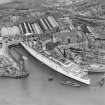
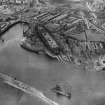









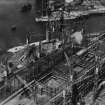




![Elevation, specification details of John Brown Shipyard Cantilever Crane.
Insc: 'Titan Crane to lift 150 Tons...Est.[imate] No. None Job No. 390 1906'.](http://i.rcahms.gov.uk/canmore/s/SC00826801.jpg)






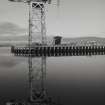








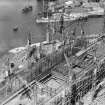
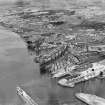

![Elevation, specification details of John Brown Shipyard Cantilever Crane
Insc: 'Titan Crane to lift 150 Tons...Est.[imate] No. None Job No. 390 1906'
See MS/744/7/6
Signed: 'Civil Engineering Dept.'](http://i.rcahms.gov.uk/canmore/s/DP00166796.jpg)

